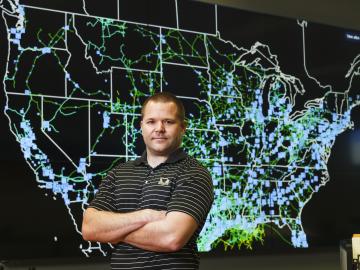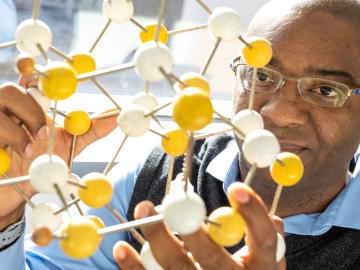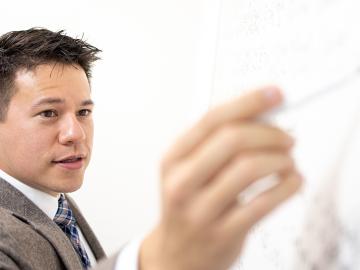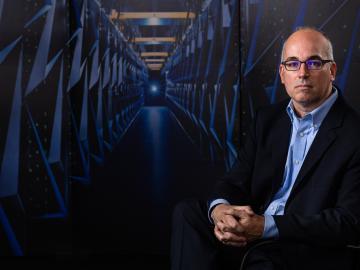
Filter News
Area of Research
- Biology and Environment (5)
- Clean Energy (21)
- Climate and Environmental Systems (2)
- Computer Science (1)
- Energy Sciences (1)
- Fusion and Fission (1)
- Fusion Energy (4)
- Isotopes (2)
- Materials (15)
- Materials for Computing (1)
- National Security (5)
- Neutron Science (5)
- Nuclear Science and Technology (5)
- Nuclear Systems Modeling, Simulation and Validation (2)
- Supercomputing (6)
News Type
Date
News Topics
- 3-D Printing/Advanced Manufacturing (4)
- Advanced Reactors (6)
- Artificial Intelligence (2)
- Big Data (3)
- Bioenergy (1)
- Biology (3)
- Biomedical (9)
- Chemical Sciences (2)
- Climate Change (5)
- Computer Science (9)
- Coronavirus (7)
- Energy Storage (9)
- Environment (10)
- Frontier (1)
- Fusion (5)
- Grid (4)
- Isotopes (2)
- Machine Learning (3)
- Materials Science (9)
- Mathematics (1)
- Microscopy (3)
- Molten Salt (1)
- Nanotechnology (3)
- Neutron Science (6)
- Nuclear Energy (9)
- Physics (7)
- Polymers (2)
- Security (1)
- Summit (5)
- Sustainable Energy (8)
- Transportation (4)
Media Contacts

Nils Stenvig has always had an interest in solving big problems. That desire drove his focus on electrical engineering in college and eventually led him to Oak Ridge National Laboratory, where today he’s using his expertise to better understand the world’s largest machine—the electrical grid.

Valentino (“Tino”) Cooper of the Department of Energy’s Oak Ridge National Laboratory uses theory, modeling and computation to improve fundamental understanding of advanced materials for next-generation energy and information technologies.

As a reactor physics nuclear engineer, Ben Betzler leverages and develops computational methods to solve questions across nuclear energy—whether it’s finding the best design of a reactor core or repurposing an old tool for a new analysis.

Researchers at ORNL demonstrated that sodium-ion batteries can serve as a low-cost, high performance substitute for rechargeable lithium-ion batteries commonly used in robotics, power tools, and grid-scale energy storage.

A novel approach developed by scientists at ORNL can scan massive datasets of large-scale satellite images to more accurately map infrastructure – such as buildings and roads – in hours versus days.

Oak Ridge National Laboratory will partner with Cincinnati Children’s Hospital Medical Center to explore ways to deploy expertise in health data science that could more quickly identify patients’ mental health risk factors and aid in

The prospect of simulating a fusion plasma is a step closer to reality thanks to a new computational tool developed by scientists in fusion physics, computer science and mathematics at ORNL.

Peter Wang is focused on robotics and automation at the Department of Energy’s Manufacturing Demonstration Facility at ORNL, working on high-profile projects such as the MedUSA, a large-scale hybrid additive manufacturing machine.

After several years in the private sector exploring the unknown origins of neurodegenerative brain disorders such as Alzheimer’s, Chris Ellis thinks one of the keys to solving the mystery is at Oak Ridge National Laboratory: the world’s most powerful supercomputer.

Liam Collins was drawn to study physics to understand “hidden things” and honed his expertise in microscopy so that he could bring them to light.


